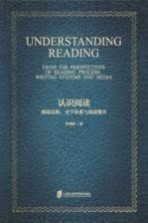

认识阅读 阅读过程、文字体系与阅读媒介PDF电子书下载
- 电子书积分:13 积分如何计算积分?
- 作 者:李晓娟著
- 出 版 社:上海:上海社会科学院出版社
- 出版年份:2017
- ISBN:7552021020
- 页数:372 页
第一部分 阅读·文字·媒介的理论研究 3
中文导读 3
CHAPTER ONE READING THEORIES OVER ONE CENTURY 6
1.1 Trajectory of reading theory development 6
1.1.1 Deconstructionist view of reading comprehension 9
1.1.2 Process-based models of reading 10
1.1.3 Constructionist view of reading comprehension 17
1.2 Highlighted reading theories in practice 20
1.2.1 A Simple View of Reading 21
1.2.2 Goodman:Reading——A psycholinguistic guessing game 23
1.2.3 Construction Integration(CI)Model 26
1.3 Summary 32
CHAPTER TWO COGNITIVE PROCESS INVOLVED IN READING 34
2 1 Goal setter 34
2.2 Knowledge base 36
2.2.1 The importance of knowledge base 36
2.2.2 How knowledge is stored in memory 37
2.2.3 Schema in reading 42
2.3 Components in the cognitive reading process 45
2.3.1 Word recognition 45
2.3.2 Lexical access 47
2.3.3 Syntactic parsing 48
2.3.4 Inferencing 49
2.3.5 Building a mental model 52
2.3.6 Creating a text level representation 53
2.3.7 Creating an intertextual representation 54
2.3.8 Monitoring 56
2.4 Summary 57
CHAPTER THREE METACOGNITIVE PROCESS IN READING 59
3.1 Person knowledge 60
3.2 Task knowledge 64
3.3 Strategy knowledge 66
3.3.1 Definition strategies 66
3.3.2 Assessment of reading strategies 70
3.3.3 Strategies and e-reading 74
3.4 Summary 76
CHAPTER FOUR WRITING SYSTEMS AND READING 78
4.1 Types of writing system 79
4.2 Depth of orthography 83
4.3 Writing systems and reading difficulties 85
4.4 Orthography and brain activities in reading 89
4.5 Orthography and reading development 92
4.6 Summary 98
CHAPTER FIVE READABILITY:THE DIFFICULTY LEVEL OF A TEXT 100
5.1 Qualitative approach 101
5.2 Quantitative approach 103
5.2.1 Traditional formulas 104
5.2.2 Modern formulas 113
5.3 Summary 118
CHAPTER SIX MEDIA AND MODES 120
6.1 Reading across media 121
6.1.1 Affordances of paper and screen 121
6.1.2 Media effect in reading 123
6.1.3 Results favoring paper-based reading 124
6.1.4 Results favoring screen 127
6.1.5 No media effect 128
6.2 Reading across modes 130
6.2.1 Model of image-language relations 130
6.2.2 The role of images in reading 133
6.3 Summary 136
CHAPTER SEVEN READING ASSESSMENT 138
7.1 Approaches to assess reading comprehension 139
7.1.1 Factorial approach 139
7.1.2 Reading subskill approach 140
7.1.3 A cognitive approach 143
7.2 Factors to consider in reading assessment 144
7.2.1 Reader characteristics 145
7.2.2 Cognitive validity 145
7.2.3 Context validity 145
7.2.4 Scoring 148
7.3 Techniques used to assess reading 149
7.3.1 Techniques used in formative assessment 149
7.3.2 Techniques used in summative assessment 152
7.4 Summary 156
第二部分 阅读·文字·媒介的实证研究 161
中文导读 161
CHAPTER ONE INTRODUCTION 164
1.1 Introduction 164
1.2 Purpose of the study 172
1.3 Research questions in brief 176
1.4 Definition of important terms 177
1.5 Hypotheses 178
1.6 Structure of the research 178
CHAPTER TWO METHODOLOGY 181
2.1 Introduction 181
2.2 Theoretical background of the study 182
2.2.1 Multimodal Discourse Theory 182
2.2.2 Dual Coding Theory 184
2.2.3 Cognitive Load Theory 188
2.3 Research questions in detail 189
2.4 Research design 192
2.5 Experiments 193
2.6 Subjects 195
2.7 Materials 199
2.7.1 Pretest materials 199
2.7.2 Reading comprehension materials 201
2.7.3 Instruments 211
2.7.4 Piloting the materials 225
2.8 Procedures 226
2.9 Summary 229
CHAPTER THREE RESULTS 231
3.1 Introduction 231
3.2 Coding and data analysis 233
3.2.1 Coding the immediate free recall test 233
3.2.2 Coding the multiple choice test 236
3.2.3 Coding SORS questionnaire 237
3.2.4 Coding the questionnaires 237
3.3 Results related to research questions 238
3.3.1 Presentation effect in general 238
3.3.2 Presentation format effect from the dimension of readability levels 246
3.3.3 Interaction between readability levels and presentation formats 255
3.3.4 Reading strategy use and presentation formats 258
3.3.5 Attitudes and strategies 266
3.4 Summary 273
CHAPTER FOUR DISCUSSION 275
4.1 Introduction 275
4.2 Discussion 275
4.2.1 Limited mode and medium effect in general 276
4.2.2 Presentation format effect varying with readability levels 283
4.2.3 No significant interactive effect between presentation formats and readability levels 288
4.2.4 Significant media effect on strategy use 290
CHAPTER FIVE CONCLUSION 296
5.1 Summary of key findings 296
5.2 Pedagogical implication 299
5.3 Limitations of study 303
5.4 Recommendations for future research 305
REFERENCES 307
APPENDIX:A 335
APPENDIX:B 338
APPENDIX:C 355
APPENDIX:D 363
APPENDIX:E 368
APPENDIX:F 370
- 《高级英语阅读与听说教程》刘秀梅编著 2019
- 《催化剂制备过程技术》韩勇责任编辑;(中国)张继光 2019
- 《阅读指要》陈艺鸣编著 2020
- 《语文阅读与写作教学研究》李玉红,陈晓玲,王芬著 2018
- 《世界名著阅读经典 欧也妮·葛朗台 高老头 全译本 12-16岁》(法)巴尔扎克著 2017
- 《绿色过程工程与清洁生产技术 张懿院士论文集精选 上》《绿色过程工程与清洁生产技术》编写组编 2019
- 《化工传递过程导论 第2版》阎建民,刘辉 2020
- 《美国小学分级阅读 二级D 地球科学&物质科学》本书编委会 2016
- 《观察、阅读、写作小学作文整体教学与思维训练》马芯兰主编 2016
- 《阅读与心理健康》王波主编 2019
